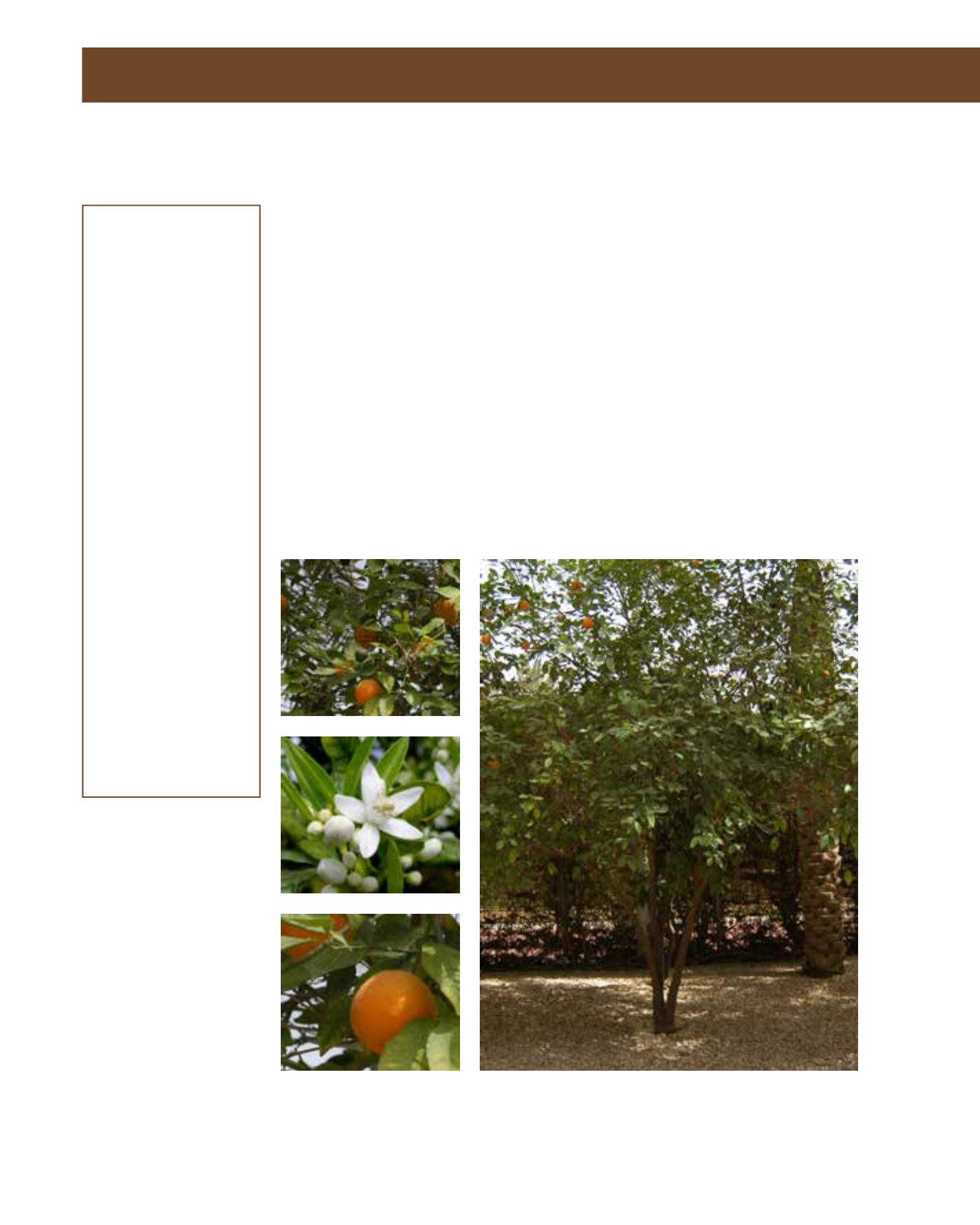

GENERAL
Origin
:
Mediterranean,
sub-tropical
Vigour
:
normal growth
rate
Humidity
:
semi-arid, semi-
humid
Propagation :
sowing and
pricking out,
cuttings
Maintenance :
high
CONDITIONS
Urban climate :
resistant
Dessication :
vulnerable
Stagnant water :
vulnerable
Irrigation
:
medium
Salinity/ppm :
low (1000 ppm)
Hardiness
:
-3°C
SHAPE
Type
:
tree, shrub
Height
:
2 m-10 m
Spread
:
2 m-8 m
Foliage
:
evergreen
FLOWER
Colour
:
white
Size
:
1 cm - 2 cm
Period
:
March - May
Smell
:
scented, strong,
leaf, flower, fruit,
sweet, fruity
FRUIT
Type of fruit :
berry
Fruit size
:
5 cm - 8 cm
Toxicity
:
edible when
processed
Sour Seville Oranges grow on these medium-sized trees that may develop to a maximum height
of 10 metres, achieving a round crown. Northeast India, Bangladesh and Myanmar are the presu-
med homelands of this species. More than 1,000 years ago it was introduced into the Mediter-
ranean and became so popular that its vernacular name honours the Spanish town of Seville. A
vigorous grower in Arriyadh, the flowers produce an unsurpassed fragrance for several weeks in
spring and are a welcome feature in many gardens. Thorny twigs bear shiny, dark-green leaves
that release an aromatic scent when bruised. They measure about 12 × 7 cm. The white flowers are
borne in spring and may be harvested to distil perfume. Some cultivars are grown for producing
essential oils that is traded as ‘neroli oil’. Pollinated blossoms are followed by yellow-orange fruits
that measure up to 8 cm across. The acidic, bitter pulp contains a large number of white seeds,
and is enclosed by strongly aromatic peel. In orchards, the trees are spaced some 5 metres apart.
The plant is tolerant of almost any kind of soil and is therefore sometimes used to bear graftings
of more delicate citrus species. Heat is tolerated with appropriate soil humidity. Brief frosts do
not harm healthy plants seriously, but soft leaves and non-lignified branches may be damaged.
They take severe pruning and even recover from being coppiced. Sour Seville Oranges may be
propagated by seeds for ornamental purposes and by grafting if cultivars are to retain certain
characteristics.
105
Citrus aurantium,
Rutaceae
Sour Seville Orange
















